Following three years of consensus-building among music stakeholders, governmental authorities, and conservation experts, policy requests put forward by a consortium of partners in the international music community (led by the League of American Orchestras, and heartily endorsed by Orchestras Canada, among many others) gained approval on August 28 at the gathering of 183 parties to the Convention on International Trade in Endangered Species of Wild Fauna and Flora (CITES) at the Conference of the Parties (CoP18) in Geneva.
Actions were approved that will improve the mobility of performing artists, and redirect enforcement resources to support conservation, and facilitate international cultural activity.
For orchestras and individual musicians seeking to buy and sell instruments across borders, or to travel internationally for performances, CITES sets some limitations and requires permits for instruments containing material from species under protected status, such as rosewood, lizards, sea turtles, and elephants. At CoP18, treaty negotiators considered new rules related to items containing rosewood, cedrela, and mammoth ivory, and improvements to the Musical Instrument Certificate in use by touring orchestras.
Delegates from the U.S., Canada, the European Union, the CITES Secretariat, World Resources Institute, and the World Wildlife Fund International all spoke in support of policy changes that will advance both conservation needs and cultural activity. The following improvements were adopted:
Rosewood: A proposal was adopted to allow all commercial and non-commercial movement of finished musical instruments, parts, and accessories that contain rosewood (the dalbergia genus) to be exempt from CITES permit requirements, aside from Brazilian rosewood (dalbergia nigra), which has been under tighter restrictions since 1992, and will remain subject to permit requirements. The exemption will be in effect starting in late November 2019, 90 days after adoption.
This represents a significant relief for musicians that buy and sell instruments containing rosewood internationally. This also adds certainty for musicians and orchestras traveling with instruments that contain rosewood. These instruments will be fully exempt from permit requirements.
In the course of discussions among a variety of stakeholders, a consensus emerged confirming that conservation goals are not furthered by requiring finished musical instruments, parts, and accessories to repeatedly undergo permit processes. However, the rosewood material used in making musical instruments will remain subject to permit requirements; this conservation effort was supported by musical instrument stakeholders.
Cedrela: A proposal related to newly listing Cedrela (a tree species used in making some classical guitars), was amended to exclude finished musical instruments containing the wood from new CITES permit requirements. The exemption will be in effect starting in late August 2020, 12 months after adoption.
Mammoth: A proposal to include the woolly mammoth as a species subject to CITES controls was rejected. Many Parties stated that mammoth ivory can be differentiated from elephant ivory in trade. Mammoth ivory has been used in small quantities to replace elephant ivory in musical instruments for several decades. CITES parties agreed to consider studying how the trade in mammoth ivory impacts elephant conservation.
Musical Instrument Certificate: A decision was approved to initiate a CITES effort to streamline and simplify permit requirements for “the international movement of CITES specimens where the trade will have a negligible impact on the conservation of the species concerned,” including the non-commercial cross-border movement of musical instruments. The CITES Musical Instrument Certificate is used by musicians performing internationally with older instruments that contain protected species material that require CITES permits, such as elephant ivory tips on bows, tortoiseshell embellishments, and lizard skin bow grips. Currently, substantial resources must be invested by both musicians and enforcement authorities to enable musicians to perform internationally with their instruments. Next steps in response to calls to ease the permit burden will take place in CITES meetings beginning in 2020. Resolutions were also approved to harmonize the codes used on the Musical Instrument Certificate and clarify the requirements for determining that items qualify for CITES permits.
The international musical community has a lasting commitment to the goals of CITES, and will remain at the table to help form policies that support the sustainability of endangered species. Detailed information on changes to the current rules for traveling with musical instruments containing endangered species material is available on the League of American Orchestras website.
In Geneva and over the course of the three-year negotiations, orchestras and other stakeholders have been ably represented by Heather Noonan, Vice President for Advocacy at the League of American Orchestras. We are grateful to Heather, the League, and the many international partners that collaborated to advance these policy requests, including:
American Federation of Musicians, Argentinian Association of Musical Instruments Manufacturers, Association of British Orchestras, Australian Music Association, Brazilian Music Industry Association (ANAFIMA), The National Association of German Musical Instruments Manufacturers, C.F. Martin & Co., Confederation of European Music Industries (CAFIM), Dismamusica, Fender Musical Instruments Corporation, ForestBased Solutions, LLC, French Musical Instrument Organization (CSFI), International Alliance of Instrument and Bow Makers for Endangered Species, International Association of Violin and Bow Makers (EILA), International Federation of Musicians (FIM), International Wood Products Association, Japan Musical Instruments Association, Madinter, Music Industries Association, National Association of Music Merchants, Orchestras Canada, Paul Reed Smith, PEARLE*, The Recording Academy, The SOMM – Society of Music Merchants e. V., and Taylor Guitars.


 A letter from
A letter from  I should like to advocate the possibility of developing socially-inclusive, community-based ‘open’ youth ‘orchestras’, in partnership with established professional orchestras throughout Canada, as a strategic and practical response to the report’s understandably challenging and uncompromising demands, drawing on the Setúbal Youth Ensemble model which I have developed over the past five years through my Music Festival in Portugal. In brief, through an open auditioning process which makes no assumptions of any Eurocentric orchestral structure, the resulting Ensemble has recruited and maintained roughly a quarter of its membership from the aural tradition, reflecting the local population of immigrants from former African and South American colonies of Portugal, another quarter comprising young people with various disabilities and special needs, and approximately half coming via the mainstream of music education – all chosen for their talent. With the instrumentation dependent on the selected young musicians rather than the other way about, there is no standard repertory and therefore all the Ensemble’s music has be specially composed or arranged: this has given unique creative opportunities to a new generation of composers, embracing unusual instrumental combinations (including the use of accessible technology, where appropriate) and inventing special notations to enable the participation of those unable to read the conventional musical language. This Ensemble is Setúbal’s official ‘youth orchestra’.
I should like to advocate the possibility of developing socially-inclusive, community-based ‘open’ youth ‘orchestras’, in partnership with established professional orchestras throughout Canada, as a strategic and practical response to the report’s understandably challenging and uncompromising demands, drawing on the Setúbal Youth Ensemble model which I have developed over the past five years through my Music Festival in Portugal. In brief, through an open auditioning process which makes no assumptions of any Eurocentric orchestral structure, the resulting Ensemble has recruited and maintained roughly a quarter of its membership from the aural tradition, reflecting the local population of immigrants from former African and South American colonies of Portugal, another quarter comprising young people with various disabilities and special needs, and approximately half coming via the mainstream of music education – all chosen for their talent. With the instrumentation dependent on the selected young musicians rather than the other way about, there is no standard repertory and therefore all the Ensemble’s music has be specially composed or arranged: this has given unique creative opportunities to a new generation of composers, embracing unusual instrumental combinations (including the use of accessible technology, where appropriate) and inventing special notations to enable the participation of those unable to read the conventional musical language. This Ensemble is Setúbal’s official ‘youth orchestra’. In recent years, there has been a tremendous increase in recognition of the need for access to the arts and music for the special needs community. Music is part of the human experience and all people have a right to be a part of that. Yet, traditional concert events have barriers that are difficult to overcome: bright lights, loud sounds, high cost, and the expectation of proper concert etiquette and behaviour can make attending orchestral concerts impossible for many with special needs. Arts education opportunities that are truly accessible are also few and far between. Physical accessibility is only part of the equation; true accessibility involves removing all barriers, which requires creative thinking on the part of arts organizations.
In recent years, there has been a tremendous increase in recognition of the need for access to the arts and music for the special needs community. Music is part of the human experience and all people have a right to be a part of that. Yet, traditional concert events have barriers that are difficult to overcome: bright lights, loud sounds, high cost, and the expectation of proper concert etiquette and behaviour can make attending orchestral concerts impossible for many with special needs. Arts education opportunities that are truly accessible are also few and far between. Physical accessibility is only part of the equation; true accessibility involves removing all barriers, which requires creative thinking on the part of arts organizations.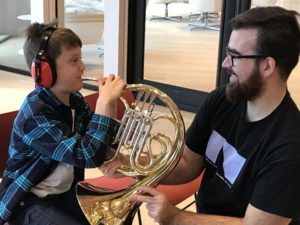 The benefits of taking part in accessible music making and concerts goes beyond just the music (which is a great incentive in itself!). Participating in an accessible adapted music program can facilitate social skill development through encouraging turn taking and engaging with peers. The sensory stimulation provided by making and listening to music in a controlled environment can aid with self-regulation and promote well-being. For parents of children with special needs, the opportunity to engage with the arts in a way that is comfortable for their child is priceless.
The benefits of taking part in accessible music making and concerts goes beyond just the music (which is a great incentive in itself!). Participating in an accessible adapted music program can facilitate social skill development through encouraging turn taking and engaging with peers. The sensory stimulation provided by making and listening to music in a controlled environment can aid with self-regulation and promote well-being. For parents of children with special needs, the opportunity to engage with the arts in a way that is comfortable for their child is priceless.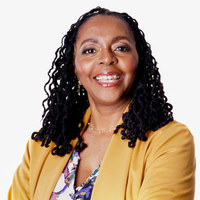 As part of OC’s
As part of OC’s 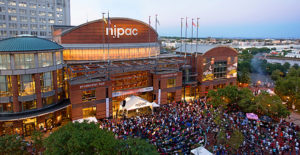 How has this work changed over time? “It’s an evolution. I’ve been involved in this work since 1982,” Donna says. “At that time we didn’t have any terminology for the lack of diversity in audiences, but there was a conversation.” It took a while for organizations to move on what they heard. In the 1990s, people started using the term audience development, and some foundations started putting funds towards this. Over time, audience development became to be seen as a term more concerned with sales, i.e. developing an audience to purchase tickets. The term community engagement represented the next step. “First we have to cultivate the community to be interested in what we’re doing,” Donna says.
How has this work changed over time? “It’s an evolution. I’ve been involved in this work since 1982,” Donna says. “At that time we didn’t have any terminology for the lack of diversity in audiences, but there was a conversation.” It took a while for organizations to move on what they heard. In the 1990s, people started using the term audience development, and some foundations started putting funds towards this. Over time, audience development became to be seen as a term more concerned with sales, i.e. developing an audience to purchase tickets. The term community engagement represented the next step. “First we have to cultivate the community to be interested in what we’re doing,” Donna says.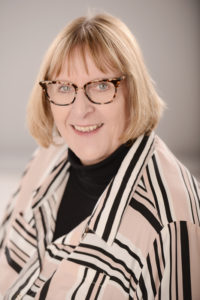 The word Digital invokes a wide spectrum of reactions from arts administrators, from screams of delight to… just screams. Whether capital ‘D’ digital is something that is embedded into your organization’s DNA, or just something that you think the staff millennial does, orchestras are engaging with their audiences on digital platforms in ways that are new, exciting, and scary. In preparation for our
The word Digital invokes a wide spectrum of reactions from arts administrators, from screams of delight to… just screams. Whether capital ‘D’ digital is something that is embedded into your organization’s DNA, or just something that you think the staff millennial does, orchestras are engaging with their audiences on digital platforms in ways that are new, exciting, and scary. In preparation for our  Although conversations about integrating digital technologies into our arts organizations are nothing new, the way we speak about it needs to change. “The term Digital is one of those zeitgeist-y terms,” Fiona says. “It’s a disastrous term that makes people feel inadequate. It’s okay not to know what that word means, because it doesn’t really mean anything.” We tend to use the term as a catch-all for being active online, but don’t always know what this looks like. Orchestras want to be digitally active, but it’s not as simple as just livestreaming everything we do. We need to strategically choose what we present online in order to get the most impact from our limited time and money.
Although conversations about integrating digital technologies into our arts organizations are nothing new, the way we speak about it needs to change. “The term Digital is one of those zeitgeist-y terms,” Fiona says. “It’s a disastrous term that makes people feel inadequate. It’s okay not to know what that word means, because it doesn’t really mean anything.” We tend to use the term as a catch-all for being active online, but don’t always know what this looks like. Orchestras want to be digitally active, but it’s not as simple as just livestreaming everything we do. We need to strategically choose what we present online in order to get the most impact from our limited time and money.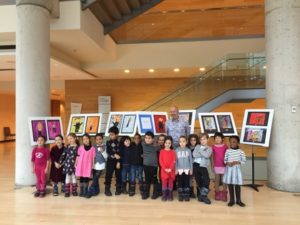 The OM at School provides an opportunity for meaningful encounters between students and musicians, in the form of workshops held in schools, and by welcoming school groups to rehearsals and concerts. Last December, the art works of some 15 kindergarten students at École Notre-Dame-des-Neiges embellished the foyer of the Maison symphonique. The students, who attended the dress rehearsal, were able to see their works on display, and to present one as a gift to conductor Yannick Nézet-Séguin. In preparation for the outing, the students had learned about Schumann’s Piano Concerto, one of the works on the program, and were paid a visit by the OM’s artistic partner, conductor Nicolas Ellis, who answered their questions.
The OM at School provides an opportunity for meaningful encounters between students and musicians, in the form of workshops held in schools, and by welcoming school groups to rehearsals and concerts. Last December, the art works of some 15 kindergarten students at École Notre-Dame-des-Neiges embellished the foyer of the Maison symphonique. The students, who attended the dress rehearsal, were able to see their works on display, and to present one as a gift to conductor Yannick Nézet-Séguin. In preparation for the outing, the students had learned about Schumann’s Piano Concerto, one of the works on the program, and were paid a visit by the OM’s artistic partner, conductor Nicolas Ellis, who answered their questions.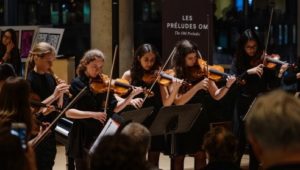 Playing it Forward aims to provide a forum for young musicians and to support their development through mentoring, master classes and other activities. The
Playing it Forward aims to provide a forum for young musicians and to support their development through mentoring, master classes and other activities. The 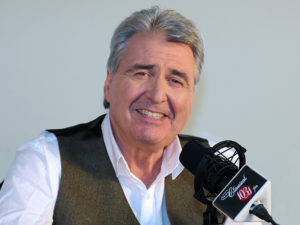 Maestro Kerry Stratton is our friend and a friend to classical music lovers across the nation, and internationally due to his incredible career. He is a household name in Toronto; in addition to being an extraordinary conductor, Kerry has been a broadcaster for three decades at the New Classical FM. For the last five years, Maestro Kerry has energetically lead the Symphony in the Gardens at Casa Loma every Tuesday night of the spring, summer, and early fall, playing to an audience of thousands each week, many of whom had never experienced the wonder of an orchestral performance. Kerry’s conducting is magnetic, energetic, fun, impassioned, and vigorous…the perfect foil to lure in unsuspecting and budding classical music lovers and they return, in droves.
Maestro Kerry Stratton is our friend and a friend to classical music lovers across the nation, and internationally due to his incredible career. He is a household name in Toronto; in addition to being an extraordinary conductor, Kerry has been a broadcaster for three decades at the New Classical FM. For the last five years, Maestro Kerry has energetically lead the Symphony in the Gardens at Casa Loma every Tuesday night of the spring, summer, and early fall, playing to an audience of thousands each week, many of whom had never experienced the wonder of an orchestral performance. Kerry’s conducting is magnetic, energetic, fun, impassioned, and vigorous…the perfect foil to lure in unsuspecting and budding classical music lovers and they return, in droves. 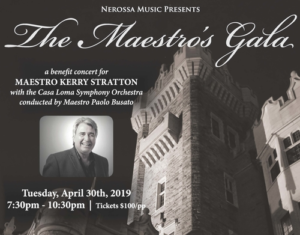 The real magic in Kerry lies in his witty, wickedly, knowledgeable mind, which ALS cannot affect. And so in his third iteration, Maestro Kerry, Artistic Director, will continue to program beautiful entertainment for as long as he is able.
The real magic in Kerry lies in his witty, wickedly, knowledgeable mind, which ALS cannot affect. And so in his third iteration, Maestro Kerry, Artistic Director, will continue to program beautiful entertainment for as long as he is able. 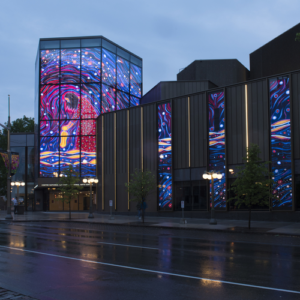
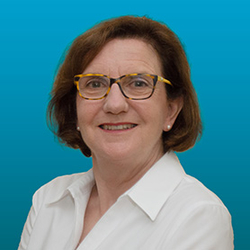 Since 2013, Orchestras Canada has been privileged to work with Micheline McKay as our government relations consultant. Micheline has served as trusted advisor, analyst and reliable source of information and feedback to the OC staff, board and Advocacy Committee. Her good sense, high ethical standards, discretion, hard work, and political insights have inspired us all. On a personal note, she’s the best and most patient co-writer I’ve ever worked with, handling my relentless editing and wild spins on things with great aplomb. I also recall with great admiration the role she played in our Orchestras on the Hill day in early 2018: the passionate tributes that Minister of Canadian Heritage and the chairs and vice chairs of the Standing Committee on Canadian Heritage paid to orchestras that day came about because of Micheline’s tact and effective organization.
Since 2013, Orchestras Canada has been privileged to work with Micheline McKay as our government relations consultant. Micheline has served as trusted advisor, analyst and reliable source of information and feedback to the OC staff, board and Advocacy Committee. Her good sense, high ethical standards, discretion, hard work, and political insights have inspired us all. On a personal note, she’s the best and most patient co-writer I’ve ever worked with, handling my relentless editing and wild spins on things with great aplomb. I also recall with great admiration the role she played in our Orchestras on the Hill day in early 2018: the passionate tributes that Minister of Canadian Heritage and the chairs and vice chairs of the Standing Committee on Canadian Heritage paid to orchestras that day came about because of Micheline’s tact and effective organization.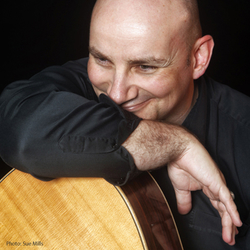 Starting April 1, we’ll be welcoming Éric Dubeau as OC’s new government relations advisor. Éric, based just outside Montreal, has many years of experience as an arts advocate, political staffer on Parliament Hill, policy wonk, association leader, granting officer, arts consultant, and award-winning singer-songwriter. His unique skills and collaborative, informed approach make him an ideal successor to Micheline, and we can’t wait to get started!
Starting April 1, we’ll be welcoming Éric Dubeau as OC’s new government relations advisor. Éric, based just outside Montreal, has many years of experience as an arts advocate, political staffer on Parliament Hill, policy wonk, association leader, granting officer, arts consultant, and award-winning singer-songwriter. His unique skills and collaborative, informed approach make him an ideal successor to Micheline, and we can’t wait to get started!